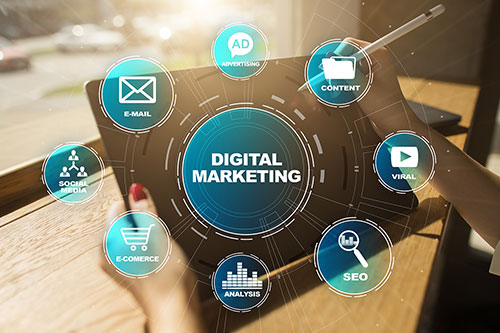
When it comes to digital marketing, statistics prove creating winning content that will attract prospects and convert them into customers is critical for companies, whether they are marketing to consumers (B2C) or to other businesses (B2B).
Attract attention from B2C buyers
- 76 percent of mobile shoppers change their minds about which retailer or brand to buy from after searching online, according to Google.
- 8 out of 10 consumers are influenced by online sources before purchasing.
Convert those B2B decision-makers
- Business decision-makers conduct, on average, 12 online searches before they engage with a brand, according to Google.
- Those same decision-makers are 75 percent of the way through the process before they contact a company.
A CEO’s checklist for winning online
CEOs who are focusing on the digital marketing aspect of their business should home in on some key areas.
- Website:
When it comes to your company’s website, ask yourself an important question: “What does your website say about your company?” Your website should convince prospective customers that your business is reliable, reputable and stays up to date with industry trends. The company website also should address customer pain points and let your customers know what problem you are solving for them. The website should be mobile friendly, given that more than half of all web traffic comes from mobile devices. Businesses that optimize for mobile devices generate 30 percent more traffic and leads than those that don’t.
- Search Engine Optimization (SEO):
SEO is the process of optimizing a website to make sure it ranks higher in results when prospective customers go searching. The SEO game is painstaking and the rules change frequently: Google looks at over 200 factors to rank websites and it changes their algorithms more than 700 times a year — almost twice a day.
- Local SEO:
Local SEO refers to taking advantage of local business listings — Google My Business, Bing listings, etc., — and making sure those are updated, owned and verified. For many searches, after all, business listings will outrank website listings in a search. Be sure include business descriptions, menus, photos, addresses and phone numbers to provide ample information about your company.
- Search Engine Marketing (SEM):
Sometimes, to get to the top of Google, Search Engine Marketing — i.e., Google Ads — provides just the right shot in the arm to boost your company to the top of the listings. Paid placements, after all, appear above organic listings in Google search. It’s important, though, to know how to manage Google Ads correctly. It can get quite expensive, and it’s critical to work with a Google certified agency to ensure success. - Social media:
There are about 3 billion social media users in the world, according to Statista, so it makes sense to capture the attention of those eyeballs. Stay focused — on message and on channels — and don’t spread yourself too thin. And don’t forget YouTube. It can be a key way to educate prospects about your product or solutions through video. These days, the social media game also includes paid social campaigns. Boosting or sponsoring posts allows for extraordinary targeting — to make sure your message is being seen by the right demographics, with the right job title and interests.
In summary, your prospects and customers are going digital — even if you are not. In order to be successful, you need stay abreast of what they want and how they research and buy products and services. Armed with that information, you can prioritize strategies and create a plan to increase sales.

